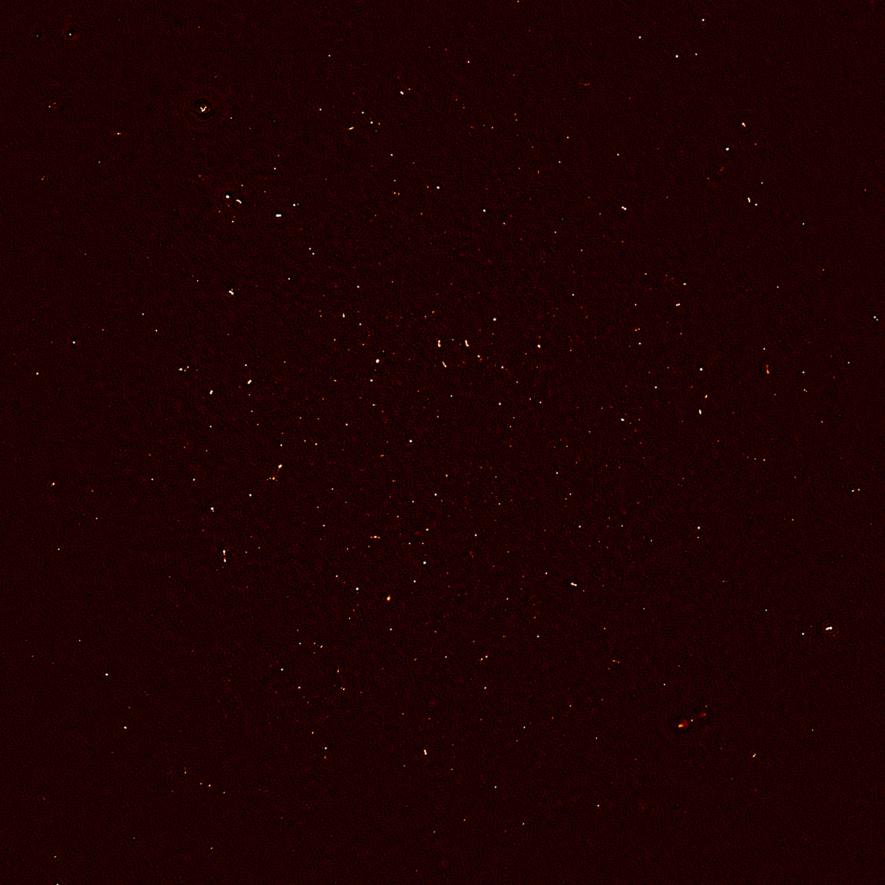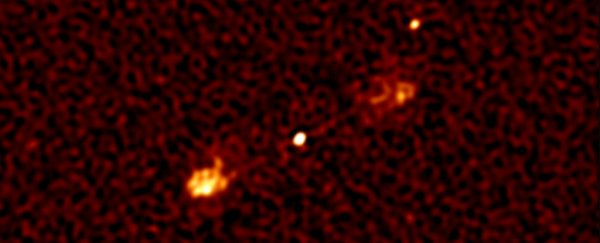Astronomers working with South Africa's MeerKAT radio telescope just discovered 1,300 galaxies in a patch of sky that researchers previously thought only contained about 70.
While this massive discovery is enough to get astronomers excited across the globe, the really impressive part is that MeerKAT isn't even operating at full power yet because the telescope isn't all the way built.
"So, right now, with only 16 of the eventual 64 dishes in place, MeerKAT is already better than anything equivalent in the Southern Hemisphere," South Africa's science and technology minister Naledi Pandor told local media.
"This is astounding because we were supposed to reach that goal only with 32 dishes. We can now expect that when the full 64 dishes are in place at the end of next year, it will be the best telescope of its kind in the world."
While it's important to note that Hubble and other telescopes are able to pick up a massive amount of galaxies in a single image, too, MeerKAT is a radio galaxy specialist, making it a vital tool if we ever want to study (and potentially photograph) supermassive black holes, because it can peer through the thick layers of dust at surround such galaxies.
"In some cases, the radio galaxy can have a great deal of obscuring dust, and you wouldn't be able to see anything – or almost anything – with an optical telescope," astronomer Michael Rich, from the University of California, Los Angeles who was not a part of the new study, told Mark Strauss from National Geographic.
"But with radio, which goes right through the dust, there's no problem in seeing it."
 MeerKAT
MeerKAT
MeerKAT is scheduled for completion in late-2017, and when its full 64 dishes are in place it will take up a whopping 17,651 square metres (190,000 square feet) in the Northern Cape of South Africa, which lies just far enough from Cape Town to allow astronomers a clear view of the sky, but close enough to make construction less of a hassle, reports Strauss.
"It is all beginning to come together but there is a great deal of work to be done. This place is going to look very different in five or so years," Pandor told media about the telescope's progress. "I am really thrilled that we got to this point and that now we are beginning to be recognised as a country that can offer world-class science to the world."
MeerKAT isn't the only new telescope that will be completed soon. One of the most exciting is NASA's James Webb Space Telescope (JWST), which is scheduled to launch in 2018 and replace Hubble.
"What the Webb will really be doing is looking at the first galaxies of the Universe," project scientist Mark Clampin said of the telescope back in April 2015. "We will also be able, with these capabilities, to look in very dark parts of the Universe where stars are being born."
On the other side of the globe, Chinese astronomers have recently finished installing the biggest 'alien-hunting' telescope in the world – a 500-metre (1,640-foot) device that officials are calling the Aperture Spherical Telescope (FAST) – which will hopefully bring us a step closer to finding alien life somewhere in the Universe.
As our ability to make better and better telescopes improves, astronomers will eventually have the tools they need to understand some of the fundamental mysteries of the Universe, such as how it all began, how dark energy and matter works, and what's up with black holes.
We can't wait.
